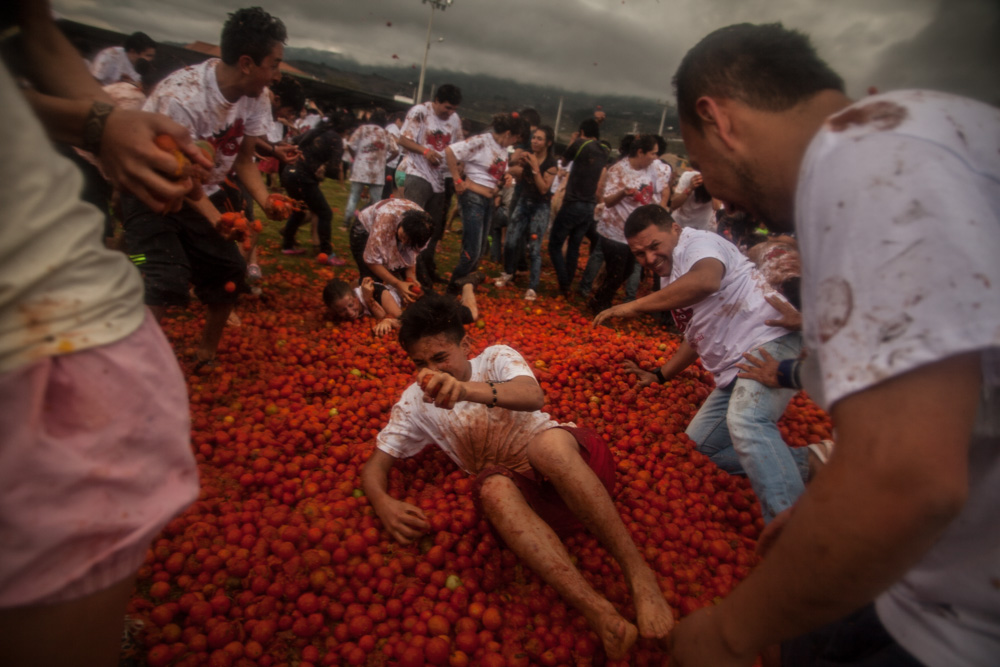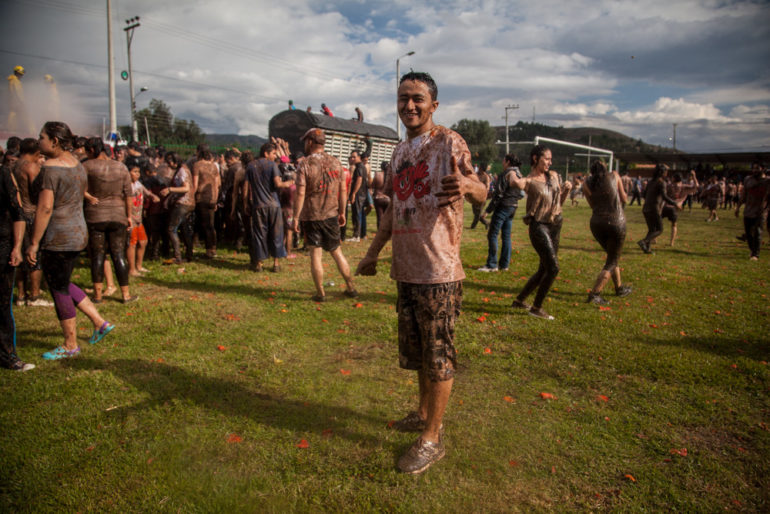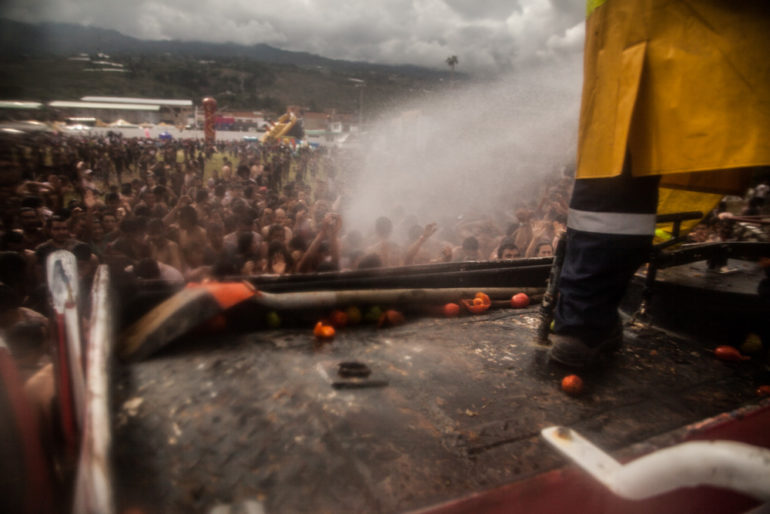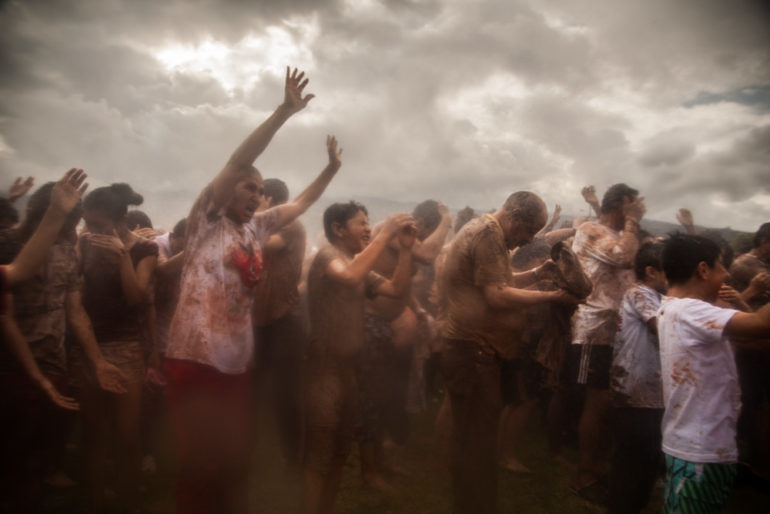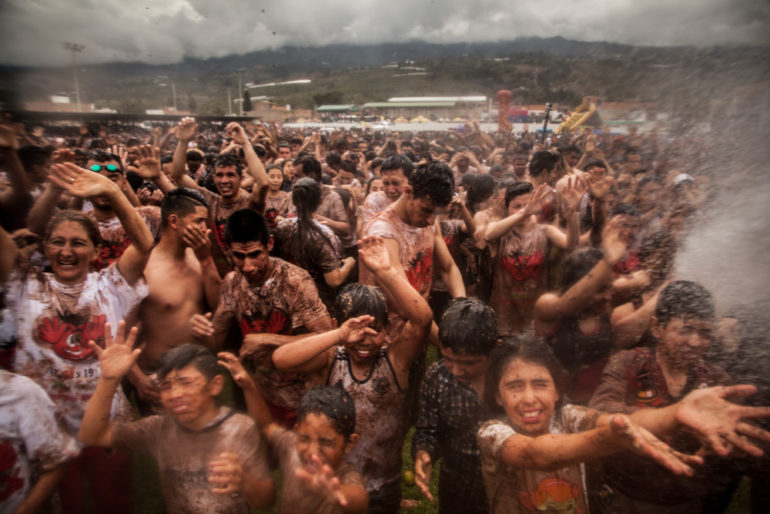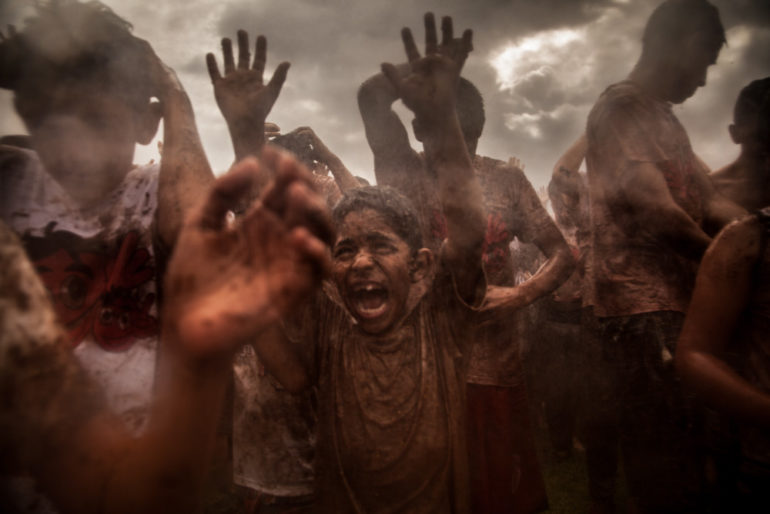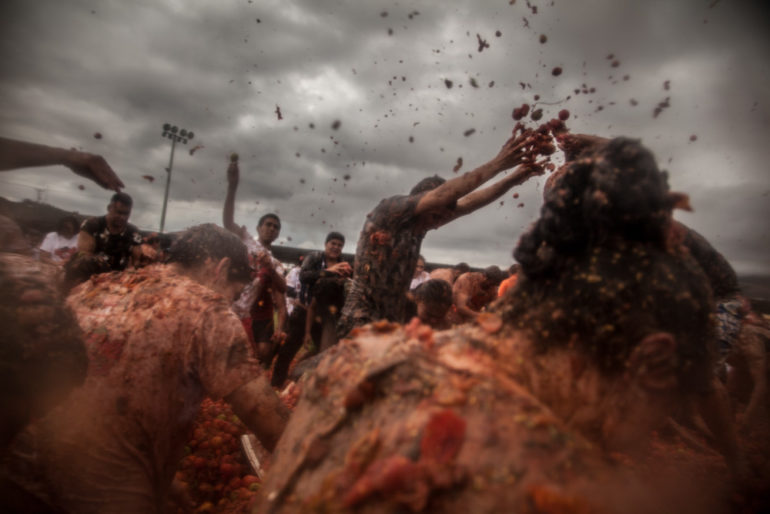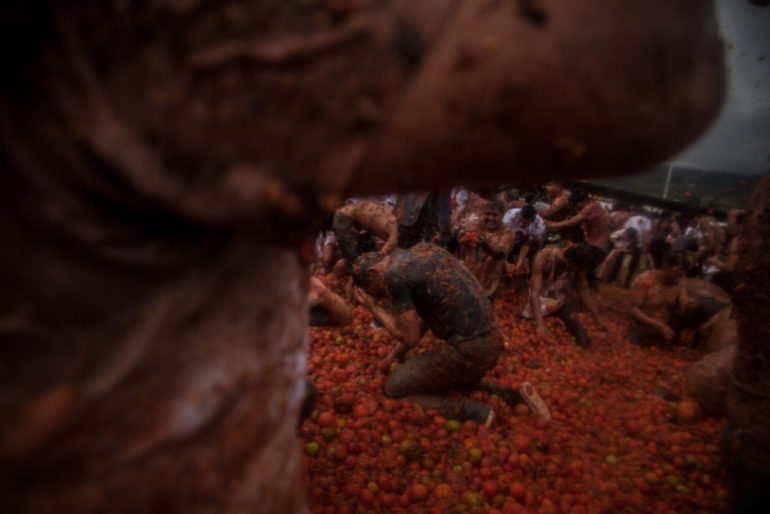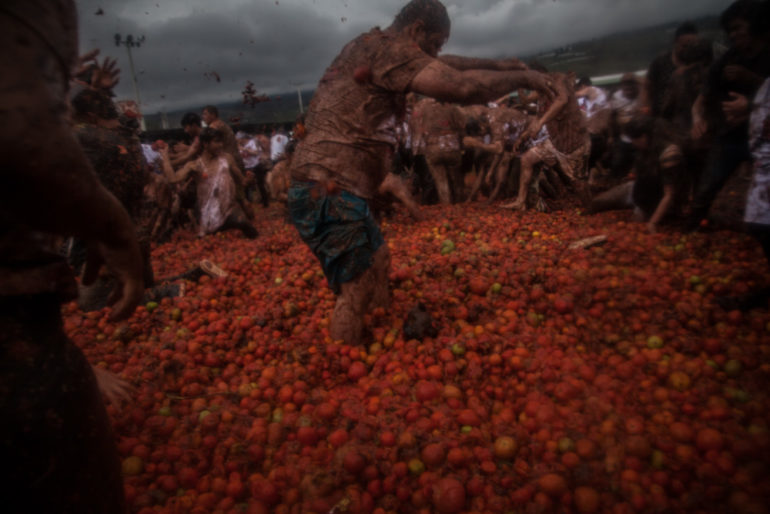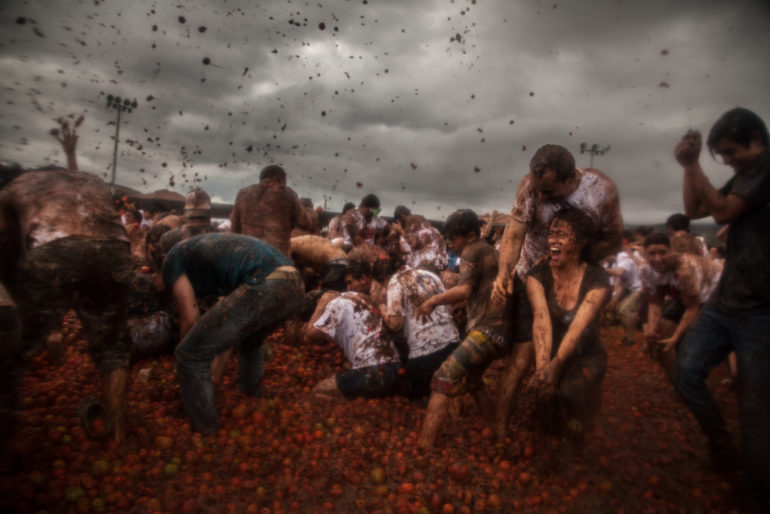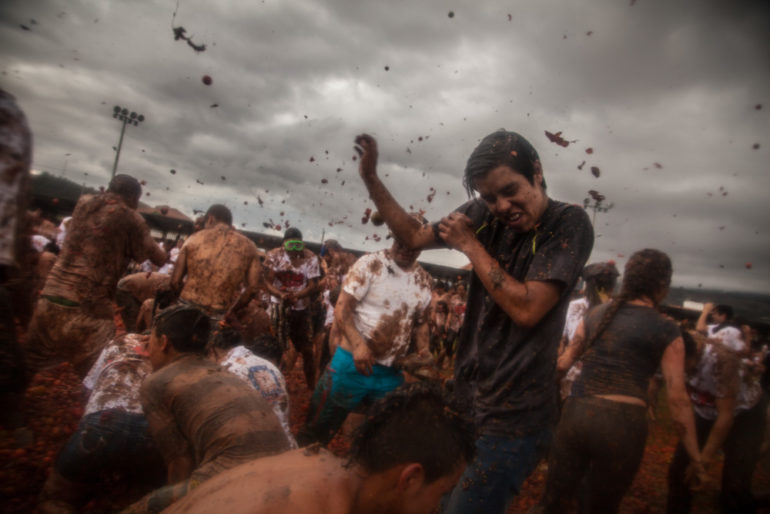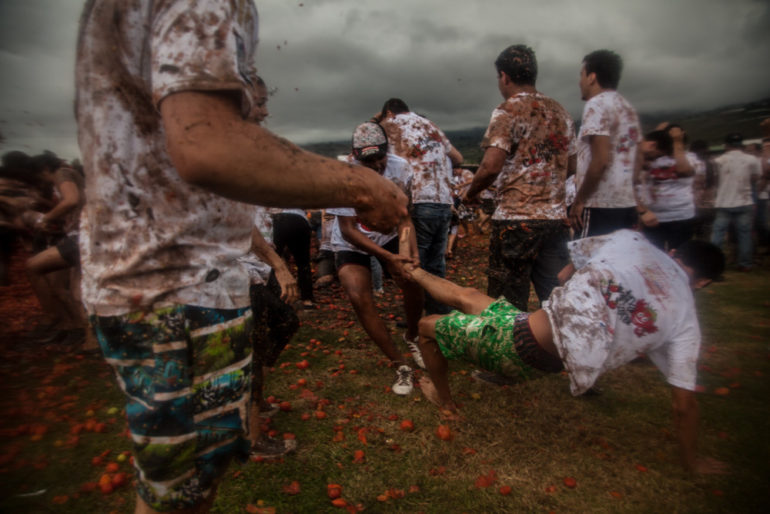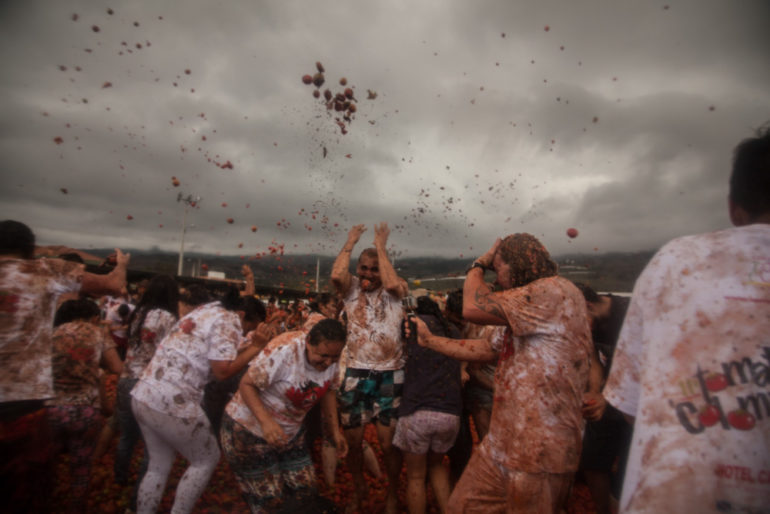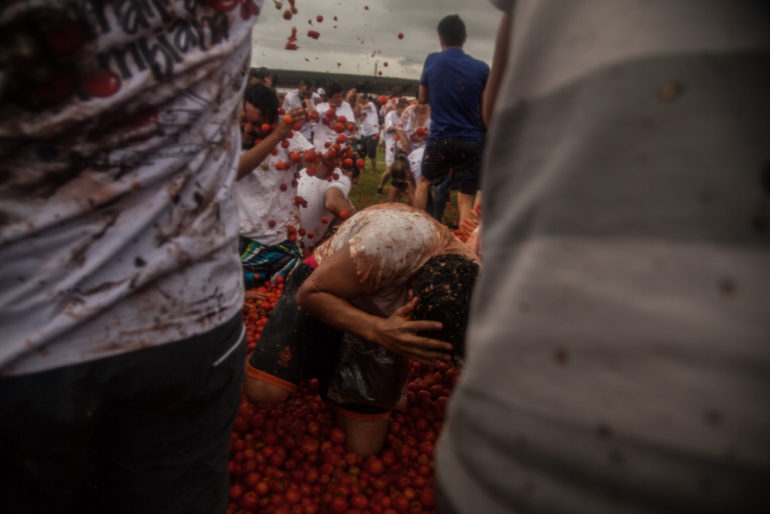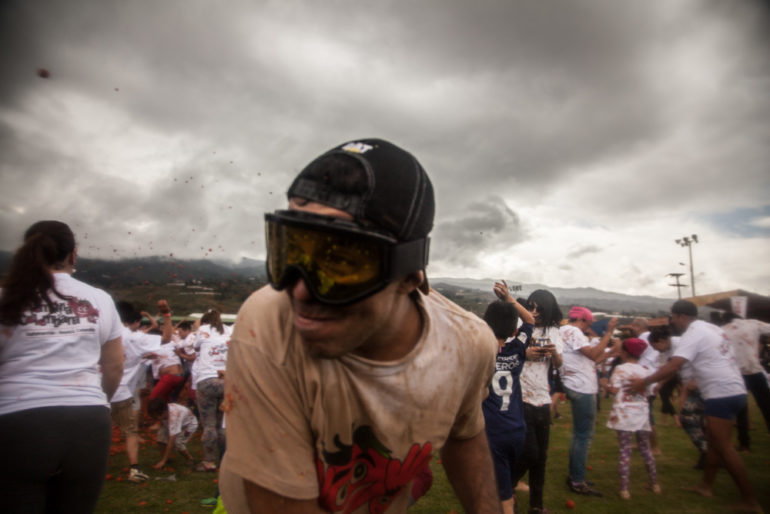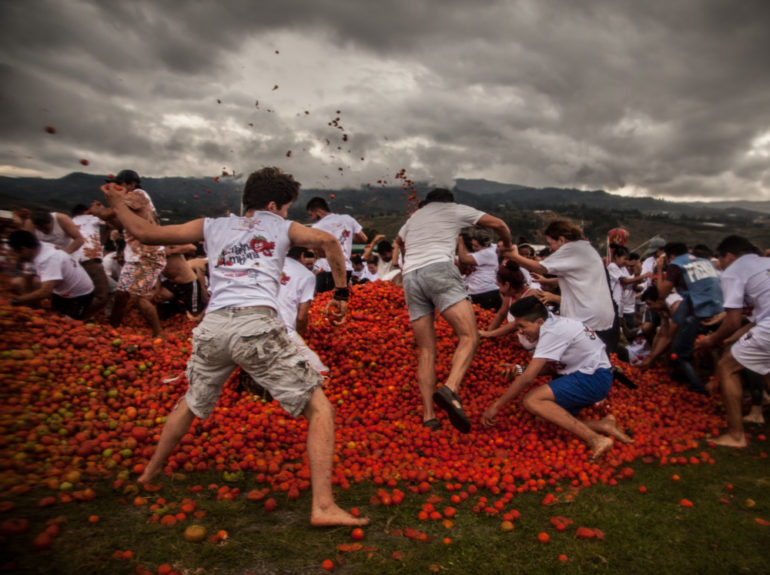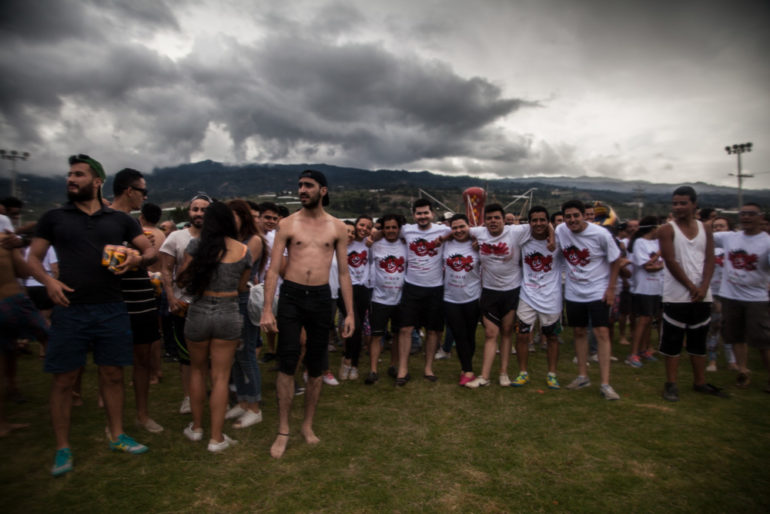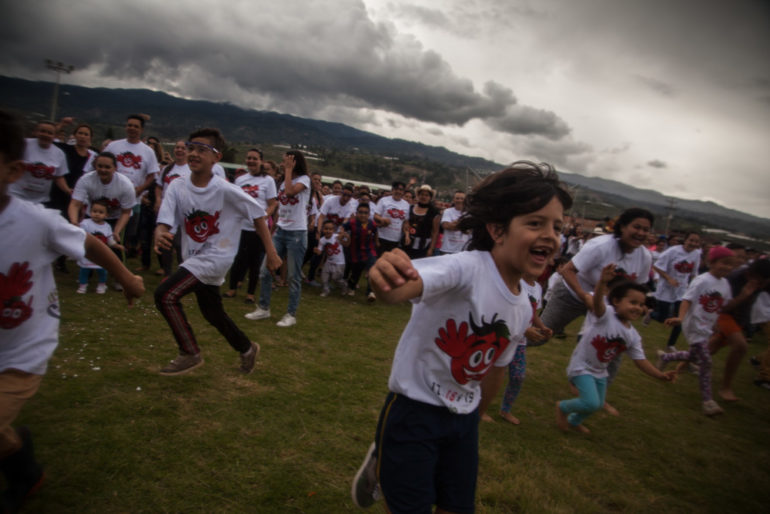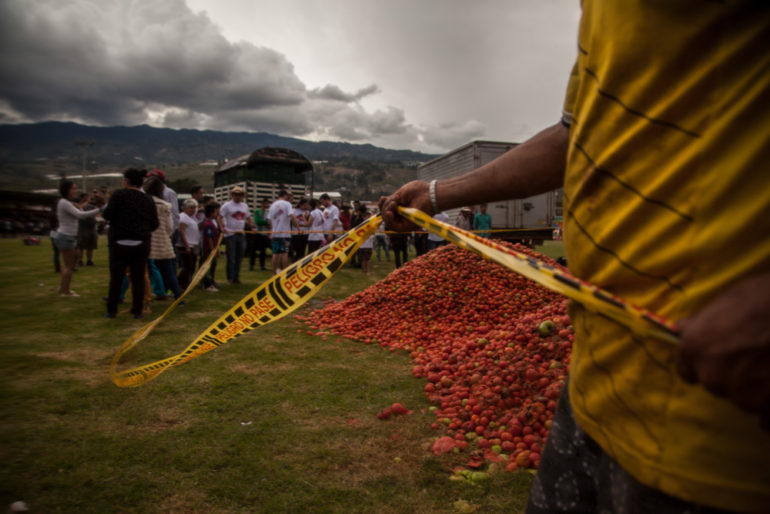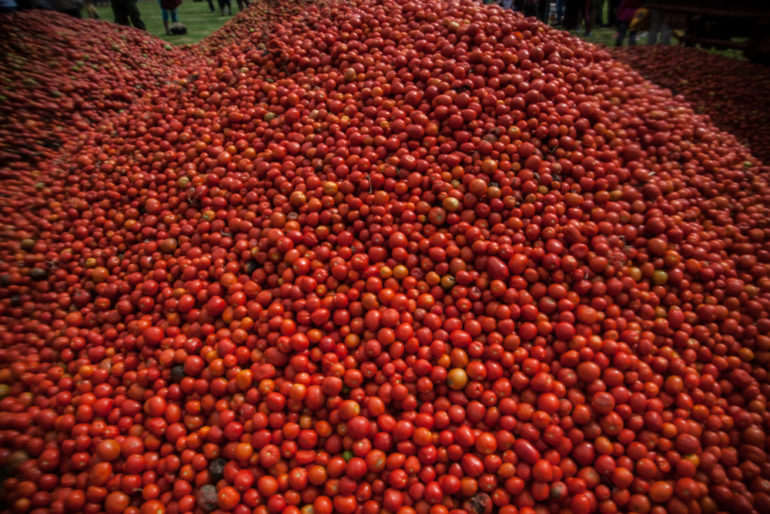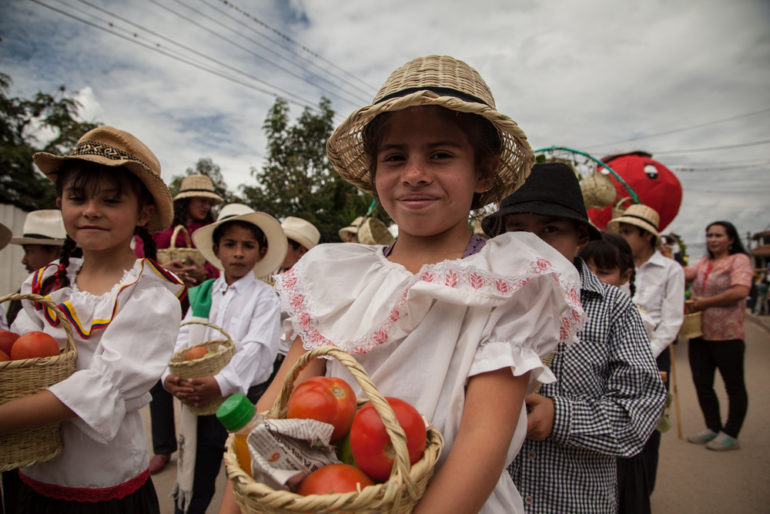All images and text by Juan Torres. Used with permission
La Tomatina is a festival which pays tribute to agriculture is the Great Colombian Tomato Fight. It is held in the middle of the year in Sutamarcha, Inspired by similar event held Buñol (Spain) during the festival thousands of revelers engage in an enormous tomato throwing fight. One of the most important tourist activities of the town, which consists of a fight in which people are free to throw tomatoes with each other taking advantage of the surplus tomato harvest. There are also handicrafts shows and contests relating to tomatoes. The event has become one of the highlights on Colombian festivals calendar with thousands of people flocking to this little Boyaca town for this chaotic event.
Such are the numbers going to La Tomatina that the event has become a victim of its own success. The sheer number of people (locals and foreign) means that it’s extremely difficult to get anywhere near the central area where the tomato lorries arrive so you may well find yourself a few streets away from the main action. Never mind, there are plenty people in the same boat and the street partying goes on no matter where you are and
Whatever you wear is going to get destroyed so make sure you take a change of clothes for the return train journey. We actually found that a snorkel and mask were well worth taking! Afterwards you can try to clean up a little at the public showers near the river but these are generally packed.
There some rules in spite of the mayhem there actually are a few rules and regulations that need to be adhered to during La Tomatina in order to ensure that the maximum number of people get the maximum enjoyment from the day. These rules are set out by Corporacion Gran Tomatina Colombiana:
- It is illegal to bring any kind of bottles or other objects that could cause an accident.
- You must not tear t-shirts.
- Tomatoes must be crushed before throwing so that they don’t hurt anybody.
- You must be careful to avoid the lorries which carry the tomatoes.
- As soon as you hear the 2nd banger you must stop throwing tomatoes.
I’m a Colombian photographer whose images explore social inequality and human-right issues. I studied PHOTOJOURNALISM at the NYIP (NEW YORK INSTITUTE OF PHOTOGRAPHY in 2013) and SOCIAL COMMUNICATION AND JOURNALISM at POLITECNICO GRAN COLOMBIANO IN COLOMBIA.
I work as a freelance photojournalist and am also pursuing personal documentary projects, currently based in Colombia and South America, available for assignment worldwide. Currently covering news, editorial, and I’ve got a Stock-Photo archive collection include coverage of a wide variety of environmental, economic, social, political, cultural and religious issues. In 2015 I returned to Colombia after a long time in United States, to photograph the country’s protracted conflict and indigenous communities in South America. I’m a regular contributor for some news agency’s like Images Live, International Photomedia. My photographs have been featured in Positive Magazine in Italy, AP Images, Newsweek, Las Dos Orillas Magazine, DW News, Daily Mail, Internazionale among others. My work has been commissioned by ACHILLES INTERNATIONAL, UNITED FOR COLOMBIA and CIREC FUNDATION, TECHO COLOMBIA, and I work as a photojournalism teacher at FCS (FUNDACION CINE SOCIAL) in Bogota.
I use the Canon 5d Mark II and Canon 7d Mark II, 50mm f1.4, 24-105mm f4 and 70-200mm f2.8L.
Why did you get into photography?
Because I feel this language is part of my thinking, because I wanted to know different worlds, because words are hard to say for me, because I’m not good drawing, because I did not know what to do in my life, because I have faith that through this tool we can show the world, because I try to reconstruct an image of the most human being outside of the prejudice and lies of the modern mass media, because I am interested to see the world in photos.
“I mean, my orientation is photography and storytelling. I actually like being scared. I like being in over my head. It makes me feel more alive. I think you find out lot about yourself when you’re under pressure and when things are going smoothly, I get pretty bored. I always say that doing these books feels a little bit like doing a jigsaw puzzle, but you lost the box that all the pieces came in. So we don’t know what this is supposed to look like.”
What photographers are your biggest influences?
Daniel Berehulak, Kevin Carter, Kitra Cahana, Stephanie Sinclair, Mike Brodie, Steve McCurry are a bit of the most talented photographers to inspire my journey.
How long have you been shooting?
I can say like 10 years ago. I started by exploring different types of Photography but enjoying the real passion for the photojournalistic process.
Why is photography and shooting so important to you?
I have been living and working in my trade almost 10 years ago, having traveled and worked in almost every possible genre: social (communions, Sweet Sixteen Parties, weddings, baptisms, etc), journalism, fashion, sports, illustration, artistic, political campaigns, advertising. I’ve even worked for HSBC Bank and been a head cook in a restaurants in NY state. I tried to give my best in each case so being a Photojournalist means being free to capture the world with my passion.
Do you feel that you’re more of a creator or a documenter? Why?
Documenter, I like to stay close to the people. I like to take myself as a sort of a photo entrepreneur. I mean, my orientation is photography and storytelling. I actually like being scared. I like being in over my head. It makes me feel more alive. I think you find out lot about yourself when you’re under pressure and when things are going smoothly, I get pretty bored. I always say that doing these books feels a little bit like doing a jigsaw puzzle, but you lost the box that all the pieces came in. So we don’t know what this is supposed to look like.
What’s typically going through your mind when you create images? Tell us about your processes both mentally and mechanically?
I’m a shy guy who likes taking pictures, but people seem to just keep adopting me. A lot of my projects shouldn’t actually work. We’re usually ahead of the curve, both from the technology point of view and also from the money part of the curve. I get so high when I shoot. I miss it terribly. I don’t miss the editors and I don’t miss not seeing the pictures used that I think should have been used, but I miss the feeling of faith and life just happening in front of you.
Want to walk us through your processing techniques?
Well, they are so simple: my eye, camera and my mind thinking and try to visualize the world in a shoot.
What made you want to get into your genre?
The curiosity to write the world’s most important events with my camera exploring social inequality and Human rights as a photojournalist.
Tell us a bit about the gear that you use and how you feel it helps you achieve your creative vision.
Cameras and gear are just mechanical artifacts to help us to capture moments and visualize our work. They are important but I prefer to talk about the books that we read, Photographers who we follow and conversations with the people we are photographing.
What motivates you to shoot?
Life is full of people, cultures and issues. Do we need more inspiration than being a human being?
Be sure to check out more of Juan’s work on Behance and Instagram.


